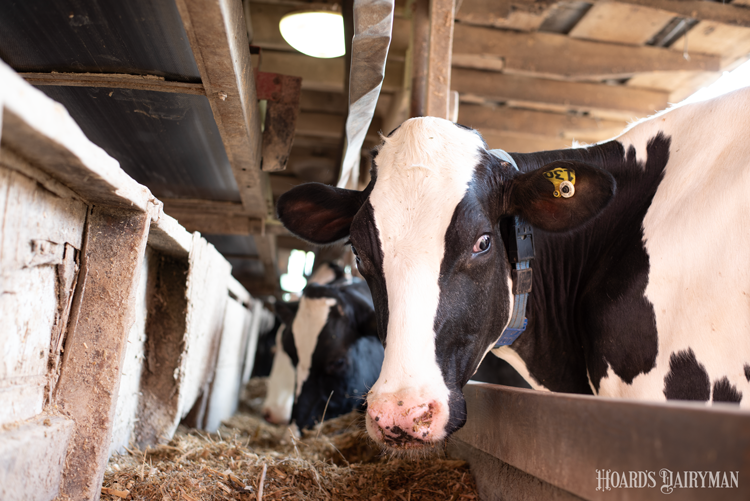
The average U.S. dairy cow’s milk production has grown by more than five times since 1945, from about 4,500 pounds then to over 24,000 pounds today. Around 2010, dairy physiologist Jack Britt used USDA data to estimate that dairy cows could reach an average milk production of over 42,000 pounds of milk by 2065 due to better genetics and management — and that research was done when genomic technology was just entering the industry.
Those improvements have been a great boost for dairy’s efficiency story and help dairy farmers do more with less land, labor, and other resources. What is concerning about that continued upward trajectory, though, is that greater milk production can be challenging to animal fertility.
J.P. Martins, an assistant professor of large animal reproduction at the University of Wisconsin-Madison School of Veterinary Medicine, discussed this balancing act during a Reproduction Roadshow event. The relationship was evident through the latter half of the 20th century when production climbed significantly thanks to selection pressure while daughter pregnancy rate fell, bottoming out around the year 2000.
Martins explained research done by UW-Madison’s Milo Wiltbank that found the relationship between these two physiological needs. As a cow makes more milk, it must consume more feed. This greater intake leads to more blood flowing through the liver, which is where progesterone and estradiol are broken down. More liver blood flow leads to faster metabolization, leaving less of these two critical hormones to circulate through the body and drive fertility.
This is why we may see shorter heats in higher producing cows, Martins continued. One study measured the time between the first and last mount of a standing heat in cows at two different production levels. Cows making 50 pounds of milk stood to be mounted for 15 hours. For cows milking 100 pounds, there were only three hours between the first and last mount.
“It’s hard to find those high-producing cows in heat,” said Martin. Farmers must check cows more often when heat duration is shorter, expending valuable time and energy.
That’s where estrus synchronization often comes in. In addition to a shift in genetic goals, hormone protocols are a large reason for the fertility turnaround the industry has been experiencing since 2000. Ovsynch and double ovsynch work, Martins encouraged. He noted a study that found that double ovsynch addresses the hormonal challenges of high production; cows on that program have more circulating progesterone than cows bred off of heat detection and achieved a higher pregnancy rate (49% versus 39%).
The researcher also described work being done to see if current fertility programs can be further improved. They studied if ovulation could be improved if the first dose of GnRH given in the ovsynch protocol was doubled from 100 micrograms to 200 micrograms.
In a group of 1,900 cows, ultrasound showed that both primiparous and multiparous cows that received the larger dose ovulated more, Martins said. This led to a greater pregnancy per A.I., too (54.6% with the larger dose and 48.2% for the smaller dose). However, they also observed a slightly elevated rate of pregnancy loss in the group receiving 200 micrograms (15.3%) compared to 100 micrograms (11.1%).
More research like this on proven fertility programs will help bolster their effectiveness as dairy cows can continue to benefit from them. They are not the only option; genetic emphasis on health and fertility traits continues to be improved. But they are another tool for a dairy farmer to use when striving for both great production and effective reproduction.








